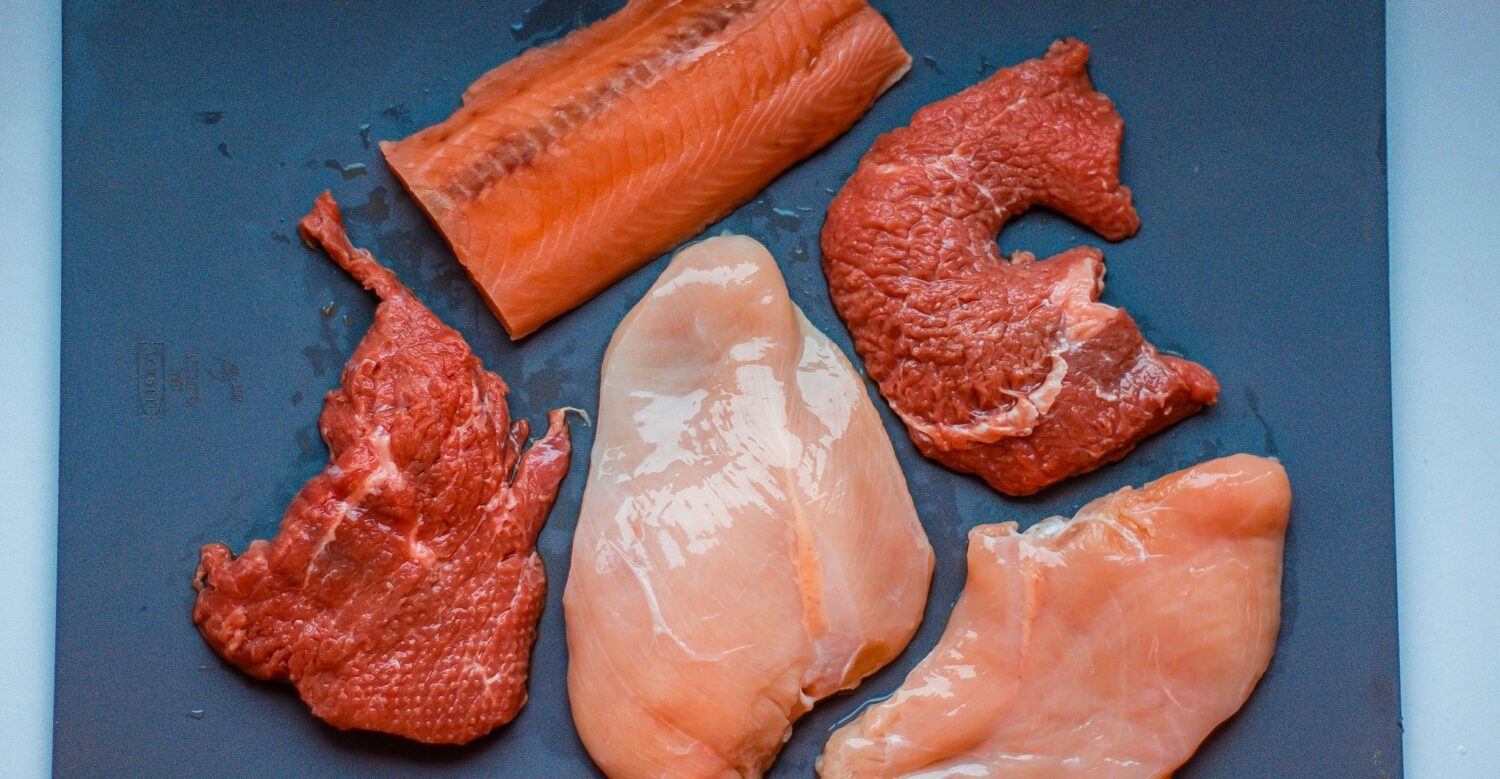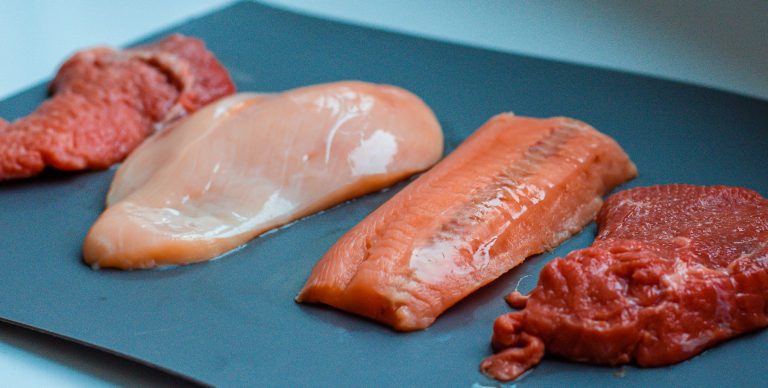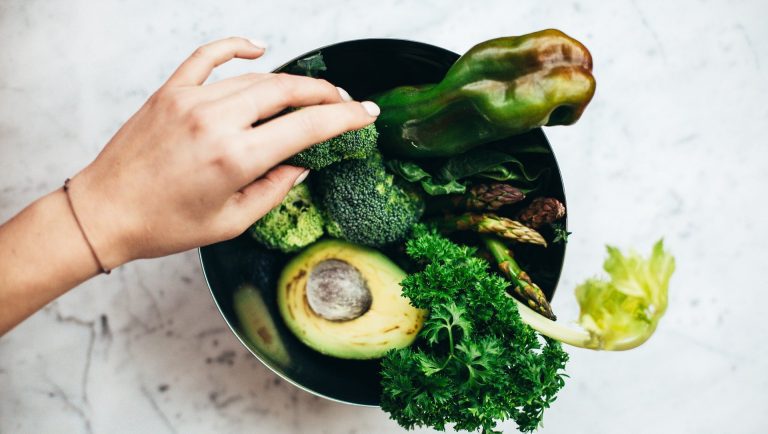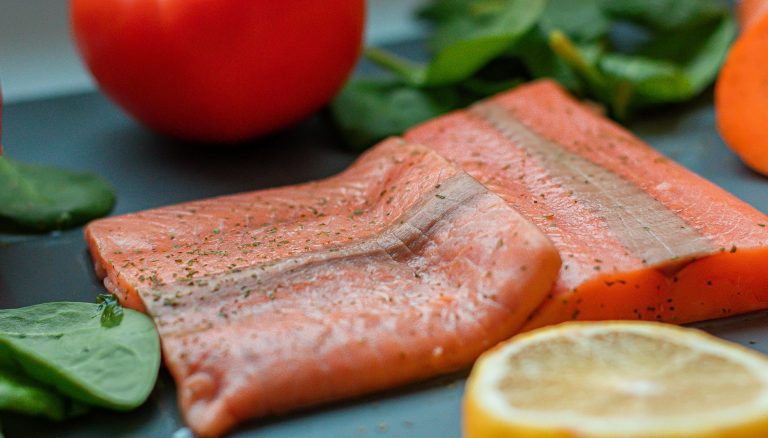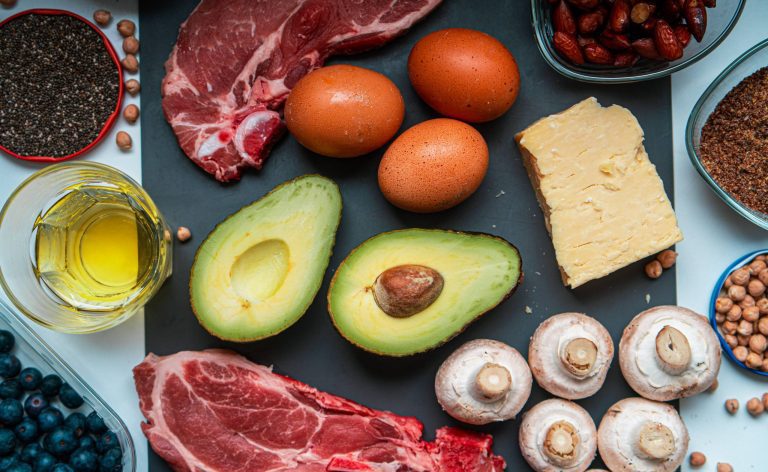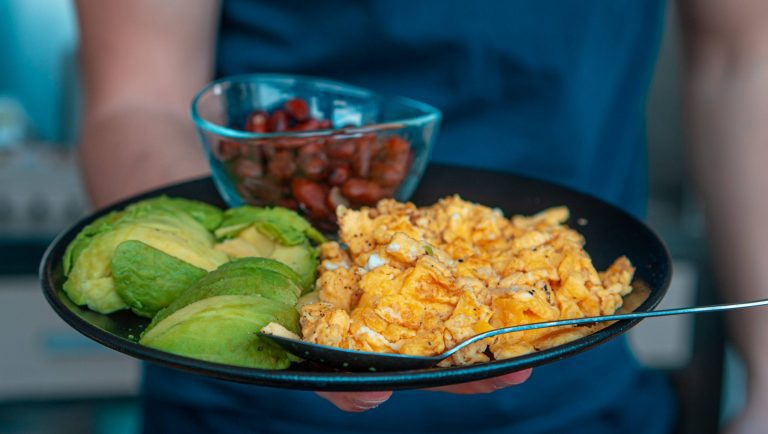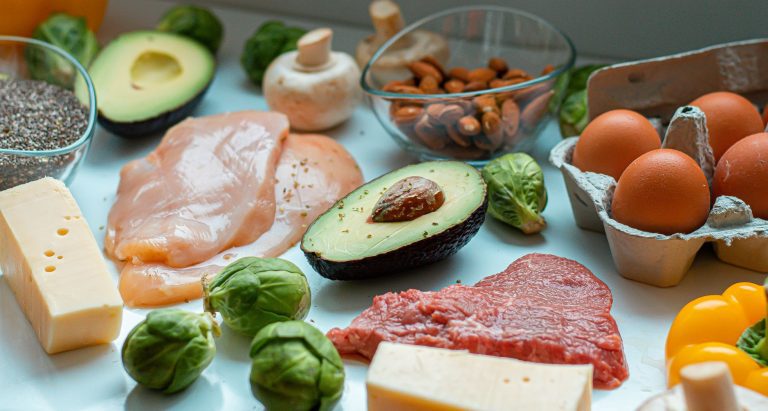The Carnivore Diet: Best Foods to Eat and Avoid
The carnivore diet is a meat-dominant diet that may come with some brain-enhancing, testosterone-boosting and fat-loss effects. It has grown in popularity since a lot of famous people started using it as an alternative to the Ketogenic diet, but excluding the 5% carbohydrate rule.
Why Carnivore?
Carnivore eaters claim to have more energy, experience rapid fat loss, and muscle growth. This is one of the biggest reasons behind its popularity. For medical conditions, the Carnivore style of eating has been also followed by people who have autoimmune issues.
So if you are serious about starting the Carnivore diet, you may want to take a look at this article, which makes this diet accessible and more practical.
What is the Carnivore diet?
Quick Answer:
- A diet that has meat at the base of its food pyramid.
- Diet that excludes all plants such as nuts, beans, legumes, seeds, vegetables, and fruits.
- The addition of milk, cheese, salt, pepper, wine, and other foods are not part of the 100% carnivore diet, but this diet has been practiced with some plant-based oils, wine, coffee, and herbs too, producing great results.
- Bone broth, water, and animal-based oils are part of the diet itself.
The all-meat diet is famous for its health benefits, which is pretty insane to expect from eating just meat. But before you go and buy a ton of steaks, first you should read the basic article on the carnivore diet I have written, so you get a better understanding of its pros, cons, benefits, risks, adaptation phase, products, foods, and supplements.
If you’re into carnivore stuff, feel free to also check out:
- Top 9 Supplements for Carnivore Diet
- The Carnivore Diet Guide: Foods To Eat/Avoid, Definition, Risks
The health benefits of going to Carnivore are well-known and studied for the short term, however, going Carnivore for a longer period, might be dangerous.
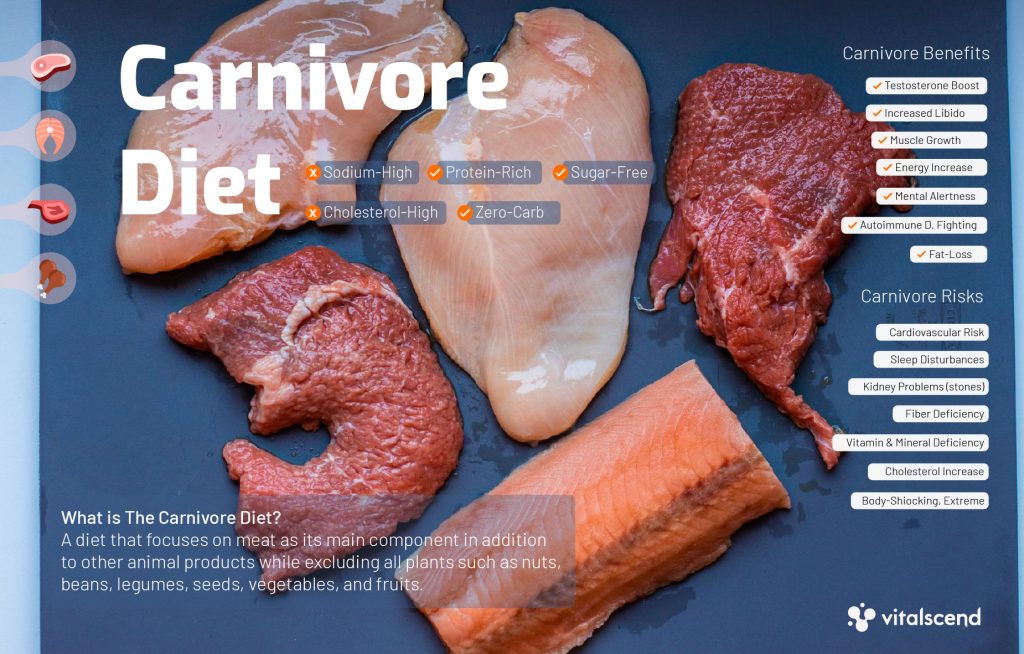
Best Carnivore Foods to Eat
When it comes to picking the right foods on a Carnivore diet, there are limited options, since this is a pretty restrictive eating regime.
You can choose between meat, fish, and poultry (partially). However, choosing certain types of meat over others can be beneficial for your health.
First of all, before you read the whole list you should consider these five things:
- As a restrictive diet, you do not have a large variety of foods to choose from, which is extreme and needs an adaptation phase.
- You must consult your doctor before attempting this kind of diet, have nutritional guidance, get your blood checked often, and supplement smart.
- Unless you want to shock your body, it is better to start off by slowly cutting off carbs, going on an LCHF diet slowly, and progressing into Keto, and then Carnivore.
- Do not exclude fat trying to eat only lean protein, as this only makes it worse and will drop your energy levels. Fats are essential here. The option for unsaturated fat only goes to seafood and eggs while most other meats, cheese, and butter are high in saturated fats.
- Feeding off of Trans fats present in processed red meats, will most likely be harmful and increase the risk of cardiovascular disease, so not every meat is made equal.
White vs Red Meat
When it comes to which meat should you choose on a Carnivore diet, there is no reason for limitation here. Since the diet itself is so restrictive, opting for low-fat meat will drain your energy and leave you feeling bad and malnourished.
So if you choose to go carnivore, you should opt for high-fat meats too, if possible wild-caught fish and grass-fed red meats.
The biggest difference between white and red meat is:
- Fat content – white meats are usually leaner, containing up to 10g of fat per 100grams
- Iron content – Red meats are slow-twitch fibers dominant and have more myoglobin and iron, which supports oxygen transport.
- Vitamin content – the higher quantity of vitamins in red meat, especially B vitamins.
Think of it as a comparison between a sprinter, with white fast-twitch fibers, a leaner, and more explosive than a marathoner, who has higher oxygen-transporting capacity, red slow-twitch fibers.
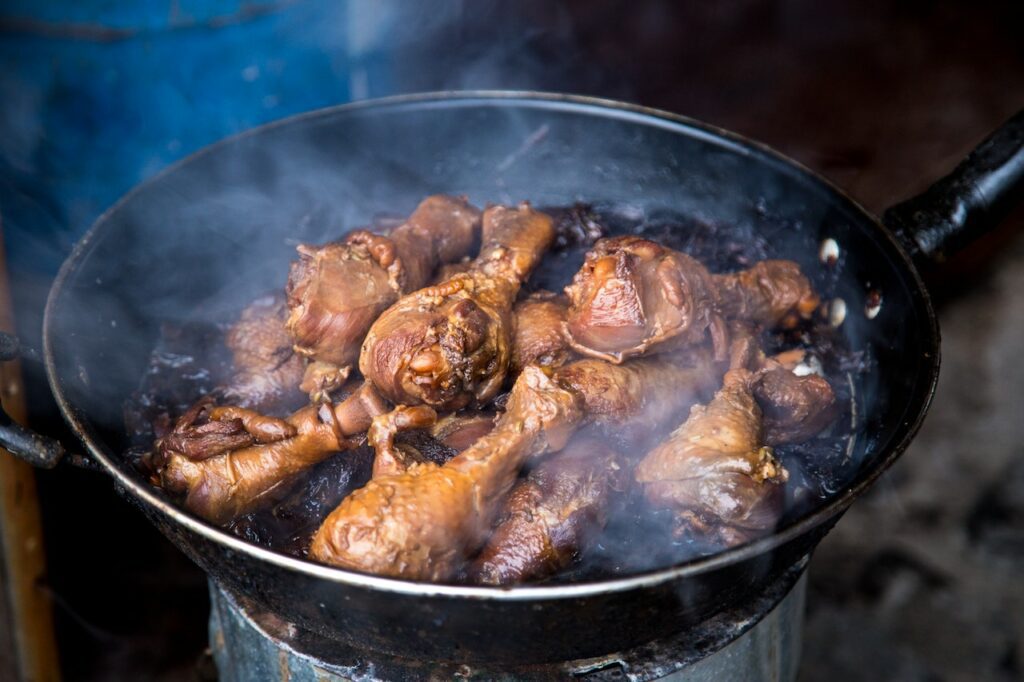
Most Nutrient-Dense Carnivore Foods
1. White Skinless Poultry Meat
Skinless white poultry meats are low in calories and have less fat, hence why they are the best option if you are looking for a leaner, protein-rich, low-fat alternative.
However, when following the carnivore diet, you should get a decent amount of fats because living off of protein will be harmful and reduce your energy levels drastically, so these white-meat alternatives are more of an option if you feel you’re eating too many fatty foods.
Chicken Breast
A great source of protein, B12, and choline. One of the most popular lean protein foods, is the base when it comes to lean muscle building. Removing the skin will reduce your calorie and fat intake. In a 100g or 3.5 oz. serving of chicken, you get around 31 grams of protein, zero carbs, and 3.6 grams of fat.
Turkey Meat
When it comes to turkey, it is not a 100% carnivore food, because of its carbohydrate content. Yes, even though we are talking about meat, its macronutrient ratio looks like this: 16% carbs, 14% fats, 70% protein. It is a lower-calorie option, having most of its calories coming from protein and carbs, with only 1.7 grams of fat per 100grams of turkey breast.
It is a rich source of protein, B6, B12, and the amino acid tryptophan which can assist in creating endorphins or “good-feeling chemicals”. A low cholesterol option when skinless, lower than chicken, pork, and beef.
Rabbit Meat
A low-fat option, containing around 6 grams of fat per 100 g of meat, an excellent source of B3, B12, phosphorus, potassium, and selenium. Having 81% of its calories as protein and 140 mg of Omega 3’s per 100 grams, is richer than chicken and pork.
Ostrich Steak
A great source of protein, ostrich is a low-cholesterol alternative too. Providing up to 8 grams of fat in 165 total calories per 100 grams, it is a leaner meat option. It contains high amounts of Niacin or B3 and B6 and B12 vitamins. Great source of Copper, Zinc, Selenium, and Phosphorus.
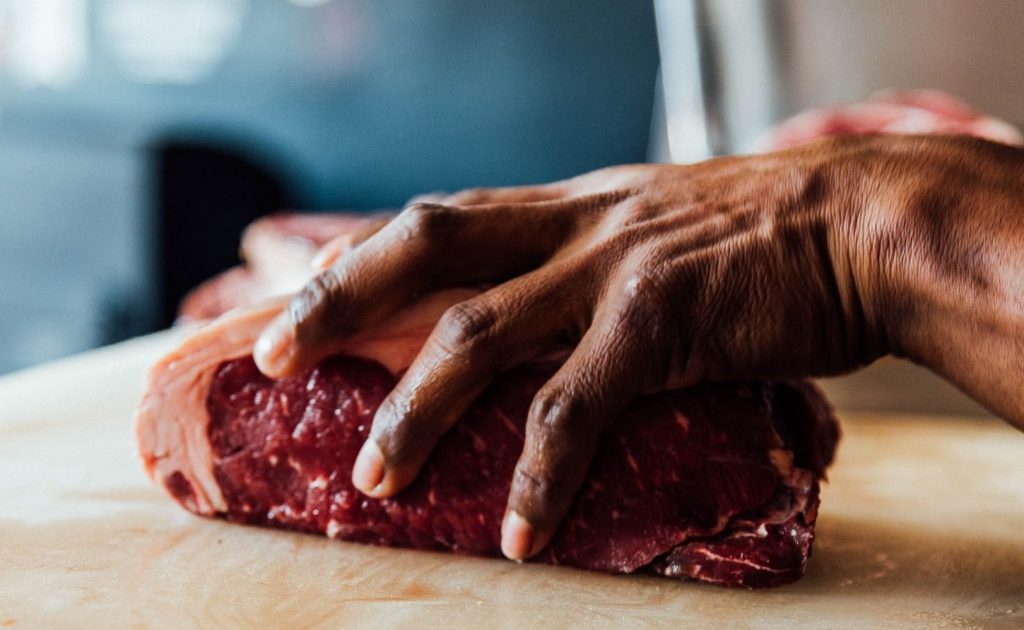
2. Grass-Fed Red Meat
Red meat doesn’t have a great reputation when it comes to health, but most of it is based on a misconception that doesn’t differentiate between grass-fed organic red meat vs trans-fat-rich processed red meats.
Some of the research around cardiovascular risks related to red meat consumption and its effects on cholesterol levels have been spread throughout the media because of the new dietary trends, but nevertheless, this is a huge topic, so I’ll give the outline here.
High amounts of processed red meats such as salami, bacon, sausages, cured or canned meat, ham, smoked, and dried meat may increase the risk of developing different diseases and are generally recognized as unhealthy foods if consumed in excess.
Low to moderate amounts of grass-fed red meats cooked in healthy oils, at moderate temperatures are healthier for you. They contain higher amounts of vitamins and minerals, especially iron, zinc, creatine, CLA, and B vitamins which can help with growth, regeneration, immunity, and brain development.
Grass-Fed Beef
Whether it comes to Keto, Paleo, or Carnivore diet, grass-fed beef is one of the highest-quality meats you can get. It contains both saturated and monounsaturated fats, providing 192 calories per 100 grams or 3.5 oz. A great source of Niacin, B6, B12, Iron, Phosphorus, Zinc, and Selenium. 100% Grass-fed beef is a leaner option that contains less saturated fat and more CLA, conjugated linoleic acid which fights cancer. Plus it contains minerals like magnesium, sodium, and potassium.
Pro Tip
When purchasing beef, you can get different cuts that have different macronutrient ratios. If you want a leaner version, with less saturated fat and cholesterol, pick eye round roast or steak, sirloin tip side steak, tenderloin, or top round roast.
Duck Meat
Another lean protein source, also abundant in important minerals such as selenium and zinc. It is a versatile type of meat that goes great in different combinations. Like any red meat, it contains higher amounts of iron than other poultry meats, while still being low in fats. This is the leaner red meat alternative.
Pork Roast
Pork is one of the fattier varieties of meat, a darker red version. The macronutrient fat to protein ratio will differ depending on which pork cuts you get. Pork Tenderloin, Centre steak, and Rib Roast have usually lower amounts of saturated fats. It is a calorie-dense type of meat for sure, offering close to 300 kcal per 3.5 oz. 20.8 grams of fat on 25.7 grams of protein per 100 grams of pork. It is a rich source of thiamin, Vitamins B3, B6, B12, zinc, selenium, and iron. Pork is also high in glutathione, taurine, and creatine which can all improve physical strength performance and muscle function.
Elk Meat
One of the leanest red meat options you have is Elk. Per 100 grams of elk, you get 111 kcal, with 1.5 grams of total fat at 23 grams of protein, which is pretty lean for red meat. It contains good amounts of zinc, selenium, phosphorus, and iron and it is good for your brain, bones heart, and immune system. Usually, it’s free of steroids, hormones, and antibiotics since they live free-range mostly and consume herbs, bark, and leaves.
Grass-Fed Bison Meat
It is another great lean red meat option. It is low in total fat and cholesterol, loaded with B vitamins, zinc, and selenium, and high levels of CLA, and omega 3 fatty acids. Per 4 oz. it provides around 124 calories, 6 grams of fat, and 17 grams of protein.
Grass-fed meat was also found to be higher in Vitamin A and E precursors and cancer-fighting antioxidants like GT and SOD activity in comparison to grain-fed meat. (1)
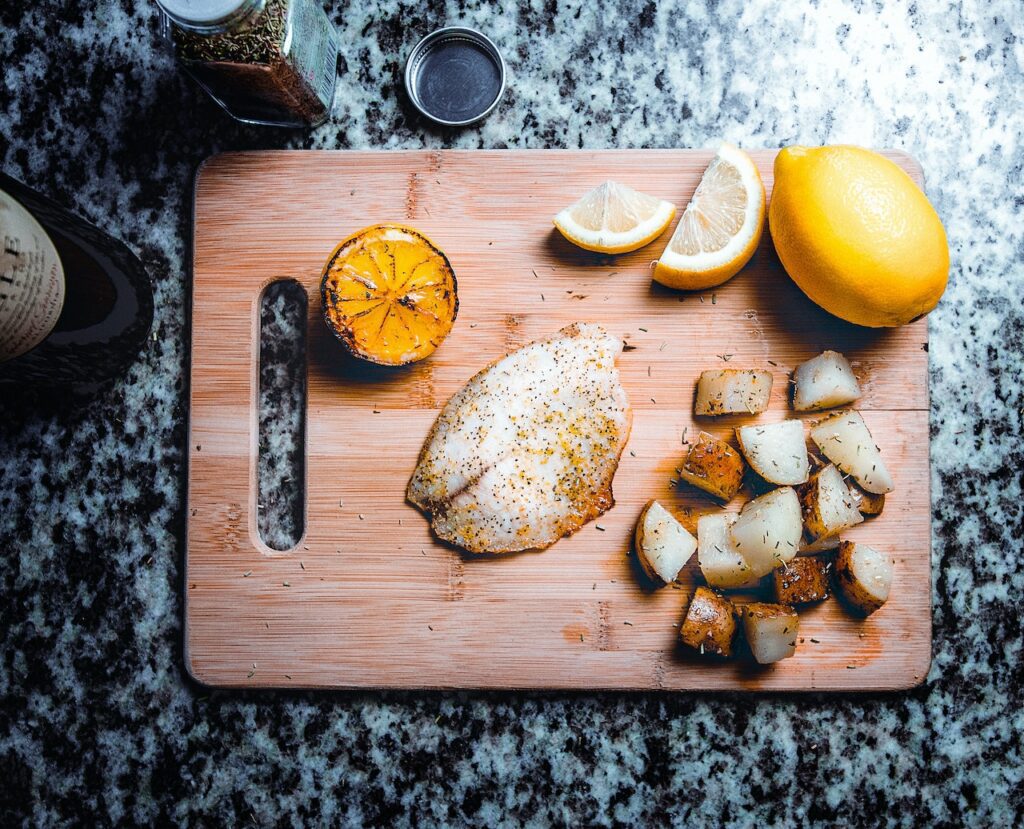
3. Wild-Caught Fish
When it comes to picking your fish, you should opt for the leaner varieties, loaded with anti-inflammatory omega-3 fatty acids, which is one of their superpowers.
Fish can be healthy, not just low-calorie and high-protein options, but also the healthy fatty acids, amino acids profile, and vitamins & minerals content.
If possible, aim for wild-caught fish, since they are grown in the natural environment, with no antibiotics that promote growth. Wild-caught fishes are richer in omega 3s, they are caught the old fashion way in the ocean, river, or lake.
Fun Fact
Ever wondered how fish got so much omega 3s in their bodies? They do not synthesize it, no. Fish and other seafood eat algae which contain loads of omega-3 fatty acids.
Wild Alaskan Salmon
You have probably heard about wild-caught salmon, it is one of the richest sources of Omega 3 fatty acids, and one of the best additions to any fitness dieting plan. It has anti-inflammatory compounds while being a great source of protein.
Per 100 grams of salmon, you get:
- vitamin D (around 500IU)
- vitamin B12 (130% DV)
- tryptophan, selenium
- omega 3’s (1130mg)
- phosphorus (24% DV)
- high choline and potassium (10% DV)
- vitamin B6 (14% DV).
Due to its nutrient-dense profile, salmon is considered a superfood. It can improve heart health, reduce inflammation, improve antioxidant status and energy production, help in building muscles and bones, and improve mood.
Pacific Sardines
Sardines are small-sized fish that have a ratio of around 50%/50% protein and fats. Usually eaten with their bones, they provide an additional amount of calcium, around 240 mg per 100 grams of canned Pacific sardine. Sardines are also rich in phosphorus, sodium, and selenium, and they provide a pretty good amount of omega 3 fatty acids. This fish is also low in mercury and pollutants.
Rainbow Trout
Trout is a great fish that offers an additional benefit for your heart. The fish looks just like any other, besides the red/pink strap it has in the middle. It is a nutrient-dense, high protein, and moderate fat fish, containing around 35% of its calories from fat and another 65% as proteins, at zero carbs. Pretty rich in niacin, vitamin B12, potassium, and phosphorus.
Atlantic Mackerel
Also known as the European horse, is one of the most nutrient-dense fish with lower amounts of mercury. It is fattier fish, with 61% of its calories being covered by fats only. However, it does contain pretty high amounts of omega 3’s at a stunning 2670 mg per only 100 grams of fish. It also contains around 20% DV of magnesium and phosphorus and 63% DV of selenium.
Swordfish
One of the leaner types of fish, provides up to 25 grams of protein per 100 grams. It contains a great combination of vitamins and minerals, with niacin, B12, phosphorus, and selenium being higher. Per one fillet, it has around 150-170kcal, with a decent amount of omega 3’s at 1057mg. Swordfish also have mostly monounsaturated and polyunsaturated fat. Pregnant women and children should avoid it, due to its higher mercury content.
4. Seafood
There are many great seafood options on the market that contain a great amount of protein while usually being lower in saturated fats. Seafood is also very high in omega-3 fatty acids, and some other vitamins crucial for growth, regeneration, and development.
Crab
Crab is a great source of lean protein with pretty low amounts of saturated fat since the calorie ratio is 82% to 12%, protein to fat. The fact that it is rich in vitamin B2, Selenium, and Omega 3’s shows us it is healthy for your brain, heart, and immune system and may speed up your metabolism. Copper, which is important for oxygen transport and red blood cell formation, is present in high amounts, nearly 30 times more in crabs than In cod.
Oysters
Oysters are one of the most popular seafood alternatives, known as libido-boosting food. Some of these properties are due to the high amounts of zinc and vitamin D it contains, which can help with growth, DNA synthesis, libido, and immunity. It is one of the most nutrient-dense foods, containing exceptionally high amounts of zinc, copper, and B12.
Shrimps
A low-calorie option, with around 85 kcal per same weight, 3 oz. or 85 grams serving. Providing up to 18 grams of protein and good amounts of selenium and vitamin B12, this food is making it on the carnivore list for its nutrient-dense profile. Shrimp contains higher amounts of cholesterol, which you might want to consider if you’re hypersensitive to it, but it also has good antioxidant activity, since it contains astaxanthin and omega 3s.
Lobster
Another low-calorie seafood option, is also low in saturated fat. It is a carnivore-friendly, zero-carb food that provides up to 27 grams of protein per 1 cup (145g). Contains choline, potassium, magnesium, zinc, vitamin E, and calcium, which can help with skin regeneration, immune function, brain performance, and metabolism. Due to its high selenium content, it may help to balance the thyroid gland.
Octopus
Great seafood option, providing up to 140 kcal per 85 gram serving. It is rich in protein and low in fat, but also contains a small number of carbs, up to 4grams per serving. It has impressive nutrient density, considering it offers 101 % DV of iron, 135% DV of Selenium, and 1275% of vitamin B12, per only one serving which is 3 oz. or 85 grams. Having such a variety of b vitamins can help with mood, metabolism, energy, and brain performance.
5. Organ Meats
Organ meats are a great addition to a carnivore diet, to rest your meat-chewing jaw muscles and add some different types of texture and flavor to your meals.
They are highly nutritious foods, loaded with tones of vitamins and minerals which can offer many health benefits.
The type of organ meats differ and so does their nutrition. Eating liver will give you different nutrients, calories, and vitamins than eating animal brain for example.
Most of the organ meats come from goats, chickens, ducks, lambs, and cows and are packed with Niacin, Riboflavin, B6, Copper, iron, zinc, vitamin B12, and proteins.
Type of Organ Meats:
Heart
A great source of CoQ10, thiamine, selenium, B vitamins, and protein. It has an amazing amino-acid profile, considered a lean protein alternative that improves energy metabolism and aid in the production of skin-health compounds such as elastin and collagen.
Kidneys
Kidneys are a high-protein, low-fat option. They are loaded with B6 and B12 and provide a good amount of Iron which can improve oxygen transport through the blood. Aim for glossy, red-colored kidneys.
Tongue
A nutrient-dense, calorie-rich, and fat-fueled organ loaded with zinc, iron, and choline. Most of these minerals play important role in muscular, skeletal, and brain development. It has a pink-red-grayish color.
Brain
Eating animal brains can be beneficial for one’s brain and nervous system. In fact, the brain has a pretty rich profile, loads of cholesterol, B12, and omega-3 fatty acids, known to help with insomnia, and improve mood, and overall brain performance.
Liver
The liver is a highly nutritious organ, great for active people and athletes. It is a great source of lean protein with low-fat content and high amounts of vitamins A, B9, Iron, and Copper. It can improve sports performance and fight fatigue.
6. Additions
In the carnivore diet, there are many different stages of adaptation and different dietary patterns similar to it, but not so restrictive. A 100% carnivore aims at animal products only and excludes olive oil, herbs and spices, mustard or ketchup sauces, and so on.
A 100% carnivore eats meat, fish, seafood, drinks water, and bone broth. However, this is a pretty restrictive diet, so many people like to add some sauces, herbs, or other plant oils and drinks to help them stay fresh, energized, and alert while making the diet more sustainable.
There is nothing wrong with including plant-based foods if you are doing it for weight loss or brain performance purposes, but if you are trying to combat an autoimmune disease and test your body’s response, then you might want to consider going zero carbs or 100% carnivore, with nutritional guidance and doctor’s approval.
Here is the list of some foods usually added to Carnivore Diet:
- Allowed foods: Water, Eggs, Heavy cream, Hard Cheese, Bone Broth, Lard, Bone Marrow, Tallow, Butter, Salt, and Pepper
- Adaptation-phase foods: Coffee, Plant-based drinks, Teas, Sauces, Herbs & Spices
Anyone who’s going carnivore can decide whether he wants a 100% zero-carb carnivore, eating only animal-based products. For the majority of carnivores out there, benefits will still be present even if they do drink some coffee, tea, or add some sauces to their meat, plant-based low-carb refreshing drinks, herbs, and spices.
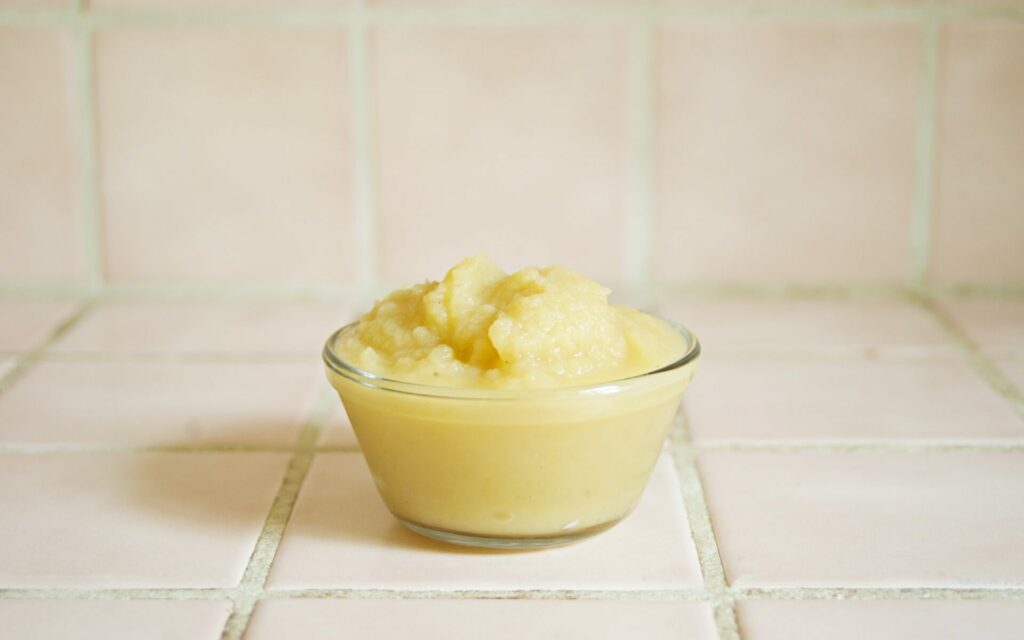
Carnivore Food Additions:
- Water: Hydrating with water is essential, humans are 60% water, and our blood is around 90% water.
- Bone Broth: A nutrient-dense soup or drink made by boiling bones and connective tissues, healthy for your bones, skin, and connective tissues
- Eggs: a rich source of protein and B vitamins, eggs are one of the highest quality animal-based proteins which can raise HDL (the good cholesterol). They contain many brain-boosting nutrients such as choline, B vitamins, and many antioxidants like zeaxanthin and lutein.
- Bone Marrow: a calorie-dense, fat-enriched food that provides essential bone and joint-building compounds such as glycine, chondroitin, and glucosamine.
- Lard: Only high-quality, Pure Lard is beneficial for human health. Lard contains high amounts of monounsaturated fats and vitamin D, plus it is considered cooking-friendly because it’s heat-stable.
- Butter: Grass-fed butter options are better, due to the higher content of beta-carotene, vitamin A, CLA, vitamin K2, and Omega 3’s.
- Hard Cheese: A great source of calcium, CLA, vitamin B12, protein, and healthy fats. The most common types of hard cheese include Gorgonzola, Asiago D’allevo, Pecorino Romano, Parmesan, Swiss, and Cheddar Cheese.
- Heavy Cream: A calorie-dense, fat-enriched cream with good amounts of fat-soluble vitamins and choline. It is pretty high in saturated fat, containing around 40 grams of fat per 100 grams.
- Salt & Pepper: Two of the most common additions to every meal, salt is great for fluid balance, thyroid function, muscle function, and nerve transmission while pepper may lower cholesterol, speed up metabolism and reduce inflammation.
Carnivore Extras: Food most commonly added to a non-zero-carb Carnivore diet
For the purpose of improving food flavor, texture, and taste, as well as improving life quality, energy levels, and overall enjoyment with diet sustainability, many people also like to add:
- Coffee: the goal is to increase energy levels, mental alertness, and start the day concentrated. Coffee also provides many beneficial antioxidants and B vitamins.
- Teas: Most common caffeinated green tea, with no addition of sugar, or other plant-based low-carb drinks, to improve cognition, concentration, or relaxation.
- Herbs: Sage, Turmeric, Parsley, Curcumin, Basil, Ginger, and many more. The goal is to regulate blood sugar, increase alertness and circulation, improve the flavor of the meal, and boost metabolism.
- Spices: Cayenne, Garlic, Sage, Rosemary, Pepper, Cinnamon, and Chili can also boost metabolism and fight inflammation, due to their high antioxidant content.
- Sauces: Mustard, BBQ sauce, Red chili & Horseradish sauces, but aim for low or zero-carb ones.
- Wine: Obviously not a carnivore food since it is plant-based, but some people add it to their eating regime, due to its health benefits, if consumed in moderation.
- Olive oil: Plant-based oil, but it’s a zero-carb option, one of the healthiest oils with tons of omega 3’s in it. High amounts of anti-inflammatory agents can help with heart health.
Keep in mind there is a difference between a diet designed for weight loss and brain performance, or eating a certain way to combat a disease. The point here is that most of the benefits seen in carnivores are still present, even after adding some of the extra additions, listed above.
Foods to Avoid
When it comes to avoiding or excluding foods from your carnivore diet, there are two main groups:
- Unhealthy 100% carnivore-friendly, zero carbohydrate foods
- Plant-source, carbohydrate-rich foods that are not part of carnivore’s diet pattern
Unhealthy Carnivore-Friendly Foods
These foods are ones that are zero carbs, carnivore friendly, animal-based products which are usually incorporated in this diet but may potentially have negative/harmful effects on your health.
As you may know, excessive amounts of cholesterol, saturated and trans-fat can accumulate over time. This can cause major issues linked to an increased risk of cardiovascular disease, because of its artery-clogging potential.
#1 Bacon
Even though it is one of the favorites to add to an omelet, considered a go-to in both carnivore and keto diet, I am sorry to disappoint you but most bacon comes as processed meat, with loads of cholesterol and saturated fats, which is not healthy. If you really like its taste, turkey bacon is the way to go, providing 25-35% fewer calories and saturated fats in comparison to pork.
#2 Margarine
The unhealthy alternative to butter, although there may be some healthier versions of it, I wouldn’t choose margarine as my main oil, simply because of its high amounts of lipids, Trans fats, and saturated fats. This calorie-dense food contains around 81 grams of fat, 15 grams of which are Trans fats, with around 715 calories per only 100 grams.
#3 Processed Red Meats
The list is long here, especially when it comes to unhealthy meat options. Processed red meats are not good for your health, can raise LDL cholesterol, and increase cardiovascular disease risk. By excluding foods like salami, sausages, bacon, ham, corned beef, canned meat, jerky, and hot dogs you can make your carnivore diet healthier.
Some of these red processed meats contain carcinogenic compounds that can stimulate the growth of cancer, so eliminating it or at least reducing its quantity can be beneficial for your health.
#4 Unhealthy Meats or Meat Parts
The ones that deserve mention in this list are Deli meat (loads of nitrates and sodium), Corned beef (loads of sodium, low on protein), Chicken nuggets (usually fried for too long, soft fibers and denatured proteins, plus loads of sodium) and Prosciutto (dried ham with loads of sodium).
Plant-based Foods & By-Products
Without too much explanation, here is the list of foods that may be healthy, but are not part of the 100% Carnivore diets, nor part of the zero-carb club, and come from non-animal, plant-based sources.
- Whole-Grains: Oats, Bulgur, Millet, Barley, Rye, Spelt, Brown Rice, Quinoa, Buckwheat
- Fruits: Avocado, Banana, Mango, Peach, Pineapple, Berries, Papaya, Coconut, Oranges
- Nuts: Almonds, Cashews, Peanuts, Brazil nuts, Walnuts, Pistachio, Macadamia
- Seeds: Flaxseed, Chia seeds, Pumpkin seeds, Sunflower seeds, Hemp seeds
- Vegetables: Spinach, Cucumber, Lettuce, Pepper, Leek, Aubergine, Onion, Carrots
- Vegetable Oils: Sunflower oil, Canola Oil, Olive Oil, Peanut Oil, Coconut Oil, Soybean Oil
- Cokes, Sodas, or Energy drink: Coca-Cola, Schweppes, Red Bull, Fanta, Sprite, Monster
- Cakes, Pastry & Sweets: Strudel, Baklava, Croissants, Cakes, Rolls, Lollipops, Muffins
- Beans & Legumes: Red Kidney/White Beans, Peas, Corn, Lentils, Chickpeas, Soybeans
- Lactose Dairy: Milk, Yoghurt, Butter, Soft Cheese, Cottage Cheese, Margarine
- Coffee, Teas: Green Tea, Black or White Tea, Herbs Tea, and Any Coffee
- Alcohol: Wine, Vodka, Scotch, Beer, Cognac, Gin, Rum, Tequila, Liquor
- Herbs & Spices: Garlic, Cayenne, Basil, Parsley, oregano, Cinnamon, Curry, Ginger, Turmeric
conclusion
The Carnivore diet as a meat-dominant diet puts emphasis on eating animal products. There is the not-so-restrictive or adaptative carnivore diet, which allows drinking plant drinks (coffee, tea) and adding olive oil, spices, or sauces to your meals. Whatever you choose, aiming for foods like wild-caught fish, grass-fed beef, seafood, and organic poultry can be a healthier alternative to eating bacon, margarine, and processed red meats. The latter should be avoided, reduced, or excluded.
Frequently Asked Questions
Is the carnivore diet really “all-meat” diet?
The original 100% carnivore diet includes any meat (beef, pork, chicken), fish, seafood, bone broth and water. However, eggs, heavy cream, lard, hard cheese, tallow, butter, lard, salt, and pepper are also allowed. The other additions of plant oils, spices, sauces, coffees and tea are part of a “flexible carnivore diet”.
What are the risks of a carnivore diet?
By completely excluding plants and living off of high fat and protein content, potential unwanted side effects include:
– increased cardiovascular risk
– impaired sleep, disturbances
– kidney related problems (stones formation)
– deficiency in fiber, vitamins, and minerals
– high cholesterol increase
– body-shocking, extreme
Always consult your doctor before trying a new diet, supplement or lifestyle changes. The carnivore diet should be avoided in population such as pregnant or lactating women, children, people with chronic kidney disease, cholesterol hyper-responders, and people who have problems with carb-restriction.
What are the benefits of the carnivore diet?
The carnivore diet may offer some benefits such as fat-loss, fighting autoimmune diseases, libido and testosterone boost, muscle growth, energy increase, and mental alertness. However, this diet is fairly restrictive and extreme, so you want to speak to a doctor before trying it.
Was the carnivore diet the main diet of our primal ancestors?
Yes, and no. There is evidence in different locations that support the idea behind our ancestors eating a carnivorous diet. However, there is also evidence that at another location/time, primal ancestors fed off just plants. There is also evidence suggesting they were omnivores, so all three exited in the past. This is analyzed by examining their skull, jaws bones and teeth.
What foods to eat on a carnivore diet?
The best foods to eat on a carnivore diet are:
– water, bone broth, lard, tallow, hard cheese, heavy cream, eggs
– chicken, grass-fed beef, wild-caught salmon, seafood, elk meat
Can I drink coffee or tea on a carnivore diet?
Following a “flexible carnivore” diet, you can add up different spices, herbs, plant oils, teas and coffee to your diet regime. The 100% carnivore diet however, does not include any such foods, and only allows eating meat, seafood, water, tallow, lard, hard cheese, butter, eggs and heavy cream

